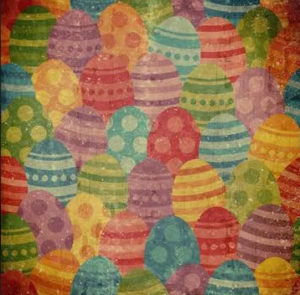 A lot of Easter traditions – including hot cross buns and lamb on Sunday – stem from medieval Christian or even earlier pagan beliefs. The chocolate Easter egg, however, is a more modern twist on tradition.
A lot of Easter traditions – including hot cross buns and lamb on Sunday – stem from medieval Christian or even earlier pagan beliefs. The chocolate Easter egg, however, is a more modern twist on tradition.Chicken eggs have been eaten at Easter for centuries. Eggs have long symbolised rebirth and renewal, making them perfect to commemorate the story of Jesus’ resurrection as well as the arrival of spring.
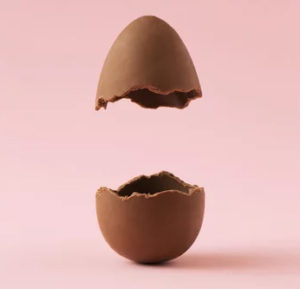 Although nowadays eggs can be eaten during the fasting period of Lent, in the middle ages they were prohibited along with meat and dairy. Medieval chefs often found surprising ways around this, even making mock eggs to replace them.
Although nowadays eggs can be eaten during the fasting period of Lent, in the middle ages they were prohibited along with meat and dairy. Medieval chefs often found surprising ways around this, even making mock eggs to replace them.
For Easter – a period of celebration – eggs and meat, such as lamb (also a symbol of renewal), were back on the table.
Even once eggs were permitted in fasting meals, they kept a special place in the Easter feast. Seventeenth-century cookbook author John Murrell recommended “egges with greene sawce”, a sort of pesto made with sorrel leaves.
Across Europe, eggs were also given as a tithe (a sort of yearly rent) to the local church on Good Friday. This might be where the idea of giving eggs as a gift comes from. The practice died out in many Protestant areas after the Reformation, but some English villages kept 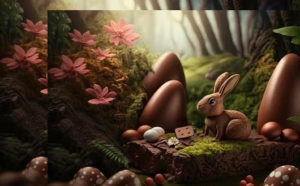 the tradition going until the 19th century.
the tradition going until the 19th century.
It’s not known exactly when people started to decorate their eggs, but research has pointed to the 13th century, when King Edward I gave his courtiers eggs wrapped in gold leaf.
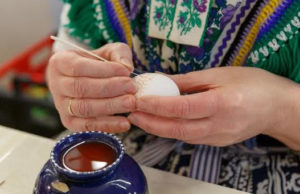 A few centuries later, we know that people across Europe were dying their eggs of different colours. They usually chose yellow, using onion peel, or red, using madder roots or beetroots. The red eggs are thought to symbolise the blood of Christ. One 17th-century author suggested this practice went as far back as early Christians in Mesopotamia, but it’s hard to know for sure.
A few centuries later, we know that people across Europe were dying their eggs of different colours. They usually chose yellow, using onion peel, or red, using madder roots or beetroots. The red eggs are thought to symbolise the blood of Christ. One 17th-century author suggested this practice went as far back as early Christians in Mesopotamia, but it’s hard to know for sure.
In England, the most popular way of decorating was with petals, which made colourful imprints. The Wordsworth Museum in the Lake District still has a collection of eggs made for the poet’s children from the 1870s.
 From dyed eggs to chocolate eggs
From dyed eggs to chocolate eggs
Although dyeing patterned eggs is still a common Easter activity, these days eggs are more commonly associated with chocolate. But when did this shift happen?
When chocolate arrived in Britain in the 17th century, it was an exciting and very expensive novelty. In 1669, the Earl of Sandwich paid £227 – the equivalent of around £32,000 today – for a chocolate recipe from King Charles II.
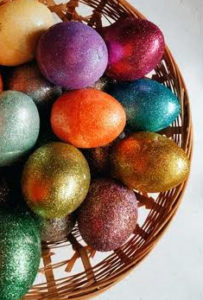 Today chocolate is thought of as a solid food, but then it was only ever a drink and was usually spiced with chilli pepper following Aztec and Maya traditions. For the English, this exotic new drink was like nothing they’d ever encountered. One author called it the “American Nectar”: a drink for the gods.
Today chocolate is thought of as a solid food, but then it was only ever a drink and was usually spiced with chilli pepper following Aztec and Maya traditions. For the English, this exotic new drink was like nothing they’d ever encountered. One author called it the “American Nectar”: a drink for the gods.
Chocolate was soon a fashionable drink for the aristocracy, often given as a gift thanks to its high status, a tradition still followed today. It was also enjoyed in the newly opened coffee houses around London. Coffee and tea had also only just been introduced to England, and all three drinks were rapidly changing how Britons socially interacted with each other.
Catholic theologians did connect chocolate with Easter in this time, but out of concern that drinking chocolate would go against fasting practices during Lent. After heated debate, it was agreed that chocolate made with water might be acceptable during fasts. At Easter at least – a time of feasting and celebration – chocolate was fine.
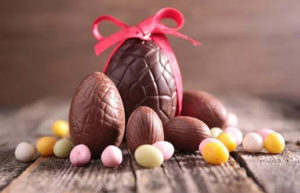 Chocolate remained expensive into the 19th century, when Fry’s (now part of Cadbury) made the first solid chocolate bars in 1847, revolutionising the chocolate trade.
Chocolate remained expensive into the 19th century, when Fry’s (now part of Cadbury) made the first solid chocolate bars in 1847, revolutionising the chocolate trade.
For the Victorians, chocolate was much more accessible but still something of an indulgence. Thirty years later, in 1873, Fry’s developed the first chocolate Easter egg as a luxury treat, merging the two gift-giving traditions.
Even in the early 20th century, these chocolate eggs were seen as a special present, and many people never even ate theirs. A woman in Wales kept an egg from 1951 for 70 years and a museum in Torquay recently bought an egg that had been saved since 1924.
It was only in the 1960s and 1970s that supermarkets began to offer chocolate eggs at a cheaper price, hoping to profit off the Easter tradition.
With rising concerns over long-term chocolate production and bird flu provoked egg shortages, future Easters might look a little different. But if there is one thing that Easter eggs can show us, it’s the adaptability of tradition. (The Conversation)




 From dyed eggs to chocolate eggs
From dyed eggs to chocolate eggs